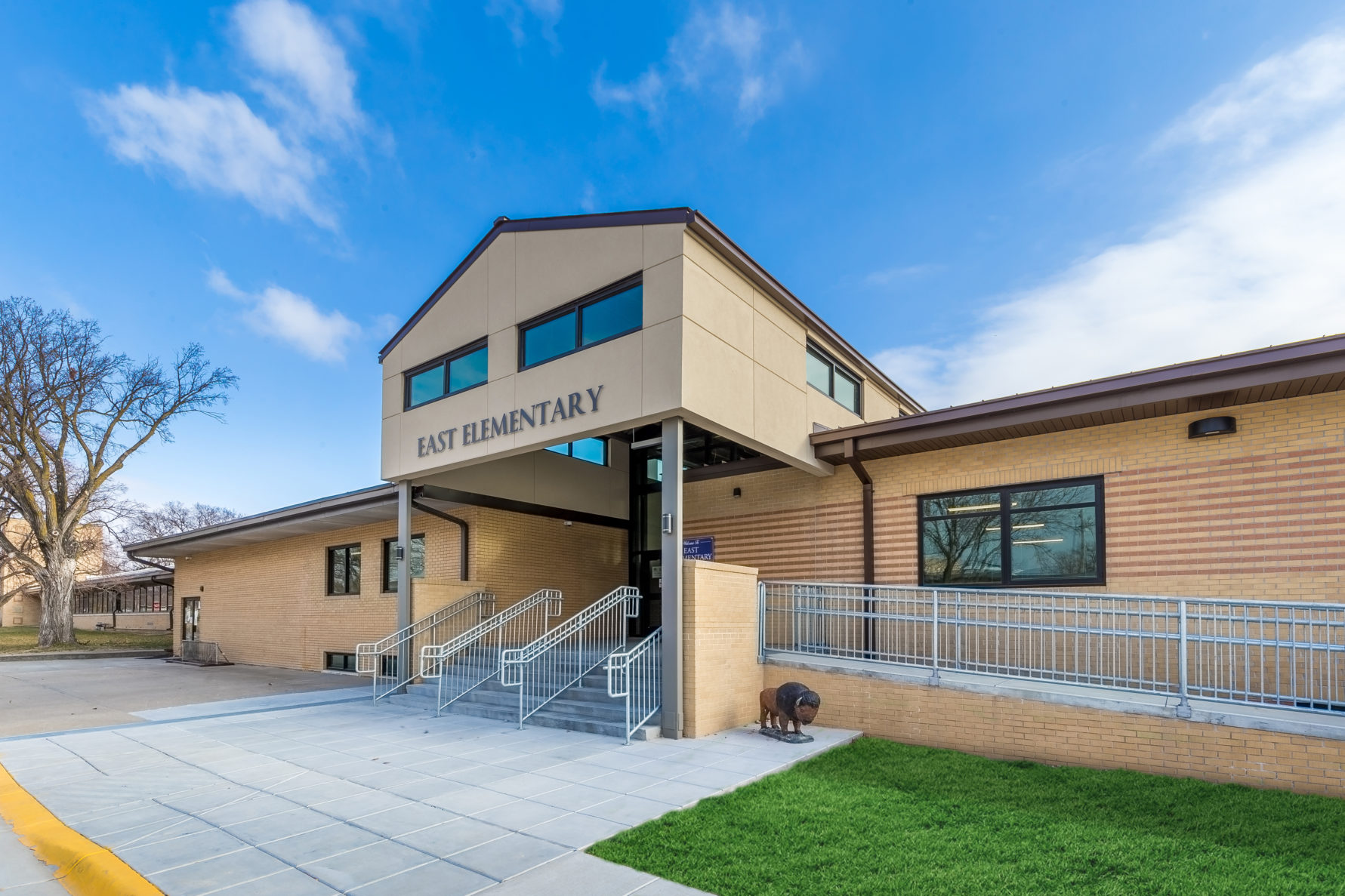How to get a school bond passed

When a school administration decides the time has come for capital improvements, such as renovations to aging facilities or new school buildings for a growing community, they typically utilize school bonds to fund these critical projects. Across McCownGordon Construction’s offices, our K-12 Education Construction team supports 10-15 school bond initiatives each year. With this expertise, we know what administrators need to do to increase their chance of passing a school bond issue with the voters in the community.
The benefit we bring to the community while involved in bond programs is our ability to present ideas from the beginning on how to save money throughout the course of the project. We also are able to educate the public about the bond, without pushing it on them.
Better quality schools are an economic engine for a community. The schools are one of the top factors any family considers when they’re relocating, and it’s one businesses consider for their employees when they’re opening as well.
What can school bonds be used for?
School bonds are voter-approved funds that school districts use for capital improvements. Bonds are paid off over time through property taxes. Some bonds call for a tax increase, while others can be worked into an existing tax rate. School bonds are first put to the voters on a ballot and, if approved, are then sold to investors.
Throughout our experience working with school districts and bond programs, we often get asked what school bonds can be used to fund. While each state has its own specifics, in general school bonds can only be used for capital improvements, such as building new facilities, renovating existing infrastructure, or land acquisition for future development.
School bonds cannot be used for purposes like increasing teacher salaries. The issue of teacher pay specifically is one that we often hear during community engagement. State law limits which types of funds can pay for different expenses within a school district. For example, Kansas law states that teacher salaries must be drawn from the school district’s operating budget. Bond money cannot be put towards an operating budget. Missouri law states a teacher’s salary must come from either the general fund or special revenue fund, depending on their particular certification. While the bond dollars cannot be specifically used for teacher salaries, passing a bond allows bond dollars to fund capital improvement projects which typically frees up dollars in the operating budget to be used for multiple benefits, including teacher’s salaries.
The school bond program process
When we get involved with a school district considering a bond program, the first step is always ensuring a thorough understanding of the district’s needs and goals. For a bond program to be successful, it’s fundamental to make sure the district understands what they need from a facility standpoint, in both a long- and near-term perspective. A part of that understanding involves bringing in partners to help with the process.
Get a facility assessment and make a plan
We recommend districts undergo a facility assessment and/or develop a master plan before they get started on the actual school bond issue. This means engaging partners—primarily an architect familiar with the process of school facility assessments—to help. In addition to understanding the needs, the district administrators need to determine what their community can handle financially.
Understand financial capabilities
Because all bond programs are funded through the taxpayer, it is important to have a good understanding of what the district’s tax base is capable of. The taxes that fund bond programs are levied through property taxes. A financial advisor is another player that should be brought in as early as possible.
To run a bond program or sell your bond, a district will need a financial advisor to help them understand what level of bond they could pass without raising taxes. If they want to try and raise taxes, a financial advisor will explain what that process would look like and how it might affect the success of the bond program.
Acquire a legal team
As we have touched on already, state law affects bond programs and how districts can move forward with them. There are restrictions in place about what can be funded and what rate of taxes can be levied upon the property owners within the district. For the best chance of success, a legal team should be brought in early to coordinate with state processes. There are legal firms and bond finance companies who specialize in these matters. It can be easy to get lost when you’re looking into your Kansas bond issue or Missouri bond issue.
Engage the construction team early
It may come as a surprise, but the best practice for getting a school bond passed is to engage the construction team as early as possible. The construction team provides valuable, real-life budget and schedule information based on the master plan and design of the new building or renovations. McCownGordon’s project approach closely mirrors best practices for passing a school bond issue, in the fact that we always bring the entire team together as early as possible.
With a thorough understanding of what the project scope is, what the long-term and near-term needs are, and how to navigate the processes with state laws, your bond issue will have a stronger chance to succeed.

Community engagement: the name of the game
Community support is vital to the success of any school bond program. All community meetings, including town halls, meetings with HOAs, and even meetings with Chambers of Commerce will be important in garnering support for the bond issue. It doesn’t hurt to have a third party to survey the community. This is a great way to gather independent thoughts and opinions on what the community might support in terms of the value scope of the bond (ie, whether a tax increase would be supported or not). Third party surveys of this nature help lessen the impact of the “vocal minority” in any community and provide a clearer picture.
The voters in the district will decide whether or not the bonds pass, so getting their support and buy-in is paramount. Schools, especially in our close-knit Kansas and Missouri towns and cities, are inextricably linked with their communities. School districts are major employers and are tasked with the important role of educating the community’s youth.
For a school bond issue to pass on the ballot, the district must listen to the community, get them engaged, and get their buy-in on the project. Think of it as a campaign. How to make that campaign a successful one ties back to the importance of assembling the financial, legal, architect and construction team early.
Information is power
Even a bond program that doesn’t increase taxes is still funded from taxes. The district still must inform the voters of the benefits behind the bond so they’ll agree to extend an existing tax rate, versus lowering the tax rate by denying the bond issue. The passage of a bond program is like a contract between the community and the school district to support one another, so the district needs to demonstrate the benefits of facility improvement to community members.
The best way to follow through with that is to make sure the district AND the community are well-informed. This means understanding the full scope of the project before you put it on the ballot. Developing that full scope requires the full team—architect, construction, legal, and financial.
As experts with the construction aspect of a bond issue, we know exactly how important it is for us to be involved in those early stages. Being a part of the pre-bond work as well as the bond itself helps us learn about the community and what is important to them. With that information, we can make sure our construction plan responds to those needs and expectations.
It also gives the district the opportunity to truly understand the project from a facility standpoint. We help in understanding costs associated with construction as well as the technical realities of adding on or renovating existing school buildings.
Always focus on safety
The community cares about the well-being and safety of the students within the district above everything else. Bringing the construction element in early also gives us an opportunity to prove our commitment to safety. This aspect is especially important in instances of renovations on existing buildings or any type of new construction on an active school campus.
Safety is a value we hold dear, and being involved early allows us to demonstrate to the community the steps we take to maintain a learning environment that is safe, appropriate, and optimal for students’ learning.
Understand the student body demographics
Knowing the demographics of the school district is yet another incredibly important piece of the puzzle. The district administration needs to understand where the growth is, where it is projected to be, what is going to influence that growth, and more. You can’t rely on outdated data for that information, either. We will ask questions to find out the most recent district demographics to make sure the planning process takes into account all important factors.
The timeline of a school bond issue
When we are working on school bond issues with a client, we recommend the stakeholders have all plans in place 8 to 12 weeks before the election. As we’ve already mentioned, bond issues are placed on the ballot for voters to decide. Generally, bond elections are going to happen during spring elections. Most of the clients we’ve had prefer to avoid placing their bond on the ballet during the larger general elections in November, especially if the election is expected to be contentious.
Knowing the election for the bond issue will likely be between February or April, plans should be in place by the end of the year prior. Of course, legal advisors can ensure state approval processes are met in a timely manner depending upon where the project is located.
In order to have everything ready, the planning effort should start at least one year prior to the expected vote. A good master plan and facility assessment can take 9 to 12 months alone, and those are indispensable factors in the success of the bond.
How McCownGordon can help pass a bond issue
When we are involved with a district looking to pass a bond issue, we respond based on our client’s needs. Whether it means sharing information behind the scenes that other stakeholders can present, or getting front and center with the community and allowing them to ask us questions directly—we are flexible, and can do what’s needed. Across our offices there are many people who are well-versed in school bond issues and can bring their experience to the table. (Our core K-12 team consists of associates who are well-versed in school bond issues and can bring their experience to the table.)
In a community meeting we can help answer questions about construction costs, schedules, and how to keep students safe during construction. Having an established, respected construction company involved from the get-go gives the community confidence in the project.
After the bond passes
Once the bond passes, we work with the school district, their bond finance company, and legal counsel to help sell the bonds. We develop cash flows and share information to provide to those who are going to buy the bonds.
Our attention starts to shift to working with the design teams to continue the project planning processes. In some situations, we can start work right away. For those districts that have the chance to fully follow the plans and general timelines we’ve set out above, construction can begin the day after a bond passes in an election. Even if that’s not the case, when McCownGordon is involved you can be assured the project will transition quickly from planning to construction.
Get started with McCownGordon
Our customer-focused mentality has always set us apart. Put us to work on your project and we will outperform your highest expectations. We provide service with integrity and value the relationships we build along the way. Just take a look at work we’ve already done and imagine what we can do for you!
With three regional offices in Kansas City, Manhattan, and Wichita, we make it easy to get high quality construction management services in the Midwest. Call us at 888-304-4929 or use our free online quote tool to get started today.




